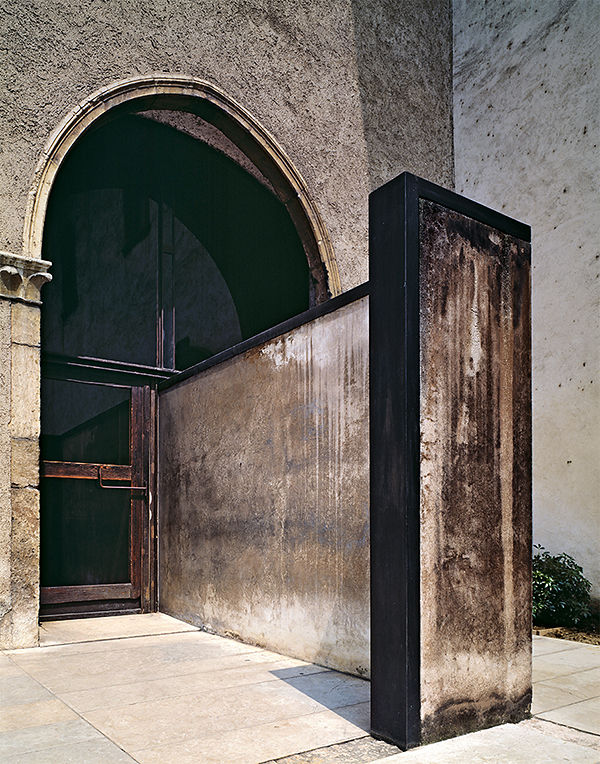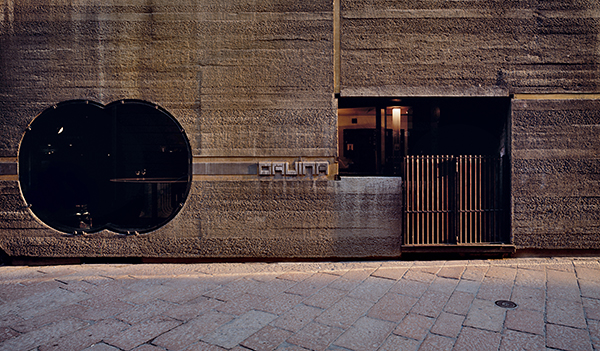Scarpa
Carlo Scarpa was a modern architect with an almost sacred respect for the ancient. This outlook came from his long association with Venice, his place of birth. Its beautiful, archaic culture was a formative influence on him. Scarpa regarded Modern architecture not as some simplistic, futuristic means of bulldozing the old but as constituting an integrated part of its historical place and culture.
Verum Ipsum Factum, an essay by Robert McCarter.
Carlo Scarpa was a unique figure among second generation Modern architects, at once deeply embedded in the archaic and anachronistic culture of Venice, while also transforming the ancient city by weaving the most modern of spatial conceptions into its material fabric.
To a degree unmatched by any other Modern architect, Scarpa stood in two worlds: the ancient and the modern – the historical place and the larger contemporary world. Through his work he forever joined these two worlds, constructing an entirely new interpretation of architectural preservation and renovation by producing works that integrate, engage and transform their place. Time – the way in which the rituals of everyday life act to inextricably intertwine the past, present and future within the charged context, and the detail – that condensation of the boundless whole into the precise part, the articulate joint, were fundamental to Scarpa’s work.
In addition to these attributes, the continued relevance of Scarpa’s work lies in the fact that his architecture was determined and shaped by the experience of the inhabitant, as someone living in a particular place, to a degree rarely found anywhere else within Modern architecture.
In his architecture, Scarpa redefined the concepts of ‘preservation’, ‘conservation’, ‘restoration’, ‘renovation’, ‘intervention’ and ‘reconstitution’, reinterpreting Modern architecture as constituting an integrated part of its historical place and culture. By re-engaging the traditional building methods and materials of the Veneto, Scarpa revived lost crafts, while at the same time introducing entirely new structures, constructions and materials into historic contexts. Scarpa deployed the articulate detail as a fundamental ordering idea, celebrating the joint in works that unfold the poetic and experiential richness of materials to a degree that was exceedingly rare in the twentieth century. Scarpa engaged modern culture in the Byzantine milieu of Venice by integrating concepts drawn from mod- ern painting and sculpture in his contextually embedded works.

Due to the fact that Scarpa’s design process, perhaps more than any other modern architect, was bound up with, and quite literally consumed by, the act of making, by decisions regarding the selection and crafting of materials, and the discoveries made during construction. At the beginning of construction, Scarpa’s designs were only developed to a very schematic level; revelations uncovered in the existing buildings’ fabric, together with insights inspired by the act of making and the engagement of craft, often altered the direction of the design process, both dramatically and subtly.
While in his works there are repeated uses of constructive and formal elements, each project was also a new beginning, with the outcome often largely unforeseen at the outset. The early eighteenth-century Venetian philosopher Giambattista Vico’s aphorism, Verum Ipsum Factum, ‘truth is in the made’, which can also be translated as ‘we only know what we make’, served as a guiding principle for Scarpa, who learnt through the process of making and building, and who, as he said, was able to see his designs only through the drawings he made of them.
